
Antec P280 Review
Manufacturer: Antec
UK price (as reviewed): £109.74 (inc VAT)
US price (as reviewed): $129.99 (ex tax)
Amazingly, it’s been more than six years since we first looked at Antec’s original P180 chassis. Take the opportunity to cast your eyes back to that review and you’ll find that, more than half a decade ago, Antec already had the formula for a great case pretty much nailed on. Stylish mini-fridge looks, a floor mounted PSU, compartmental design, removable dust filters, speed-adjustable fans and bomb-proof build quality that meant bit-tech staffers at the time still use it as their primary case. It’s a tough act to follow, but with the release of the Antec P280, it’s one we were hopeful Antec could pull off.
Removing the new P280 from the box though, we were a little disappointed to find it’s finished in the same black paint job of its Antec stable mates, rather than in the fascia-matching trim of the original P180. Super-size dimensions also make it quite the imposing chassis too, measuring 526 mm (H) x 231 mm (W) x 562 (D). Crucially though, the P280 retains the characteristic aluminium door, with a grey aluminium plate running the height of the case’s fascia. Oddly, the fascia is actually slightly narrower than the case’s chassis though, with diagonal plastic moulding reducing the width.
The P280’s door is fitted via a dual-hinge, allowing it to open up to 270°, although the wider plastic door trim doesn’t make for as smart an effect when the door is opened against the side of the case. Behind the door we find that its aluminium front plate is backed with foam, with a plain black front fascia holding three 5.25in drives bays and a huge removable dust filter. Behind the filter are two empty 120mm fan mounts, with fans fitted using custom screws from the front rather than the usual self-tapping screws. While it’s a shame to see the demise of the P180’s push-button filter hatches, the single large filter is arguably easier to remove and clean, if not as fancy.
A front panel of 2 x USB 2 ports, 2 x USB 3 ports and the standard 3.5mm microphone and headphone jacks are standard for a modern case, with the USB 3 ports only offering connection via an internal 18-pin header. However, as not everyone’s motherboard is blessed with such a header, Antec will provide an internal USB 3-to-USB 2 connecter to new owners on request.

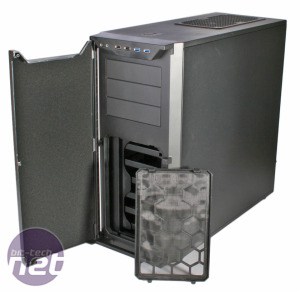
Click to enlarge - The front panel features a pair of both USB 2 and USB 3 ports, with a large removable dust filter below.
Power and reset buttons are found on top of the case, out of the way of roaming office chairs should you place your case at ground level. The roof of the case also accommodates a pair of 120mm fan mounts, with a pair of Antec’s own fans installed as exhausts. These fans are fitted using standard self-tapping screws, but oddly Antec has chosen to use silver screws rather than matching black ones. Again though, Antec will supply a black set to new owners on request.
To the rear of the case is a third 120mm exhaust fan, as well as a fan control panel. It’s a similar panel to that found on the rear of the Antec 1200, except the P280’s only features three two-speed switches, one for each included fan. Sadly there’s no way to daisy chain extra fans onto the controller though. A mighty nine expansion slots means the P280 can accommodate even multi-card SLI and CrossFire setups, and a pair of water-cooling tube holes (really, who uses these?) are close by.
The P280’s floor mounted PSU mount is oddly small for an Antec case. A few years ago, Antec began shipping chassis with enlarged PSU mounts to accommodate its own line of super-size CP-series PSUs, but the P280 looks to signal a move away from the larger mount. Instead it features a standard size PSU mount, albeit with an excellent side-removable dust filter.
While the P280 might lack some of the panache and style of its predecessors, we can’t fault its external layout and build quality. The case still looks smart, despite the bare side panels, and its dust filters in particular are excellent; you can remove and clean both without so much as undoing a thumb screw. Now let’s find out if it’s as capable inside.

MSI MPG Velox 100R Chassis Review
October 14 2021 | 15:04

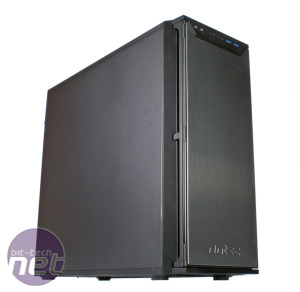

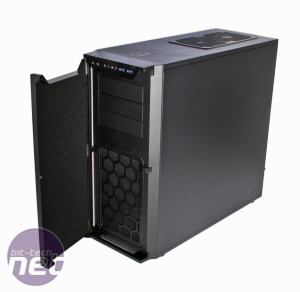
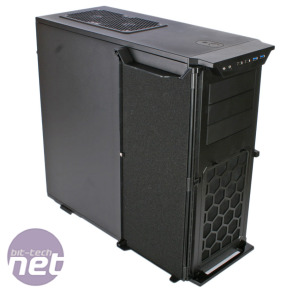
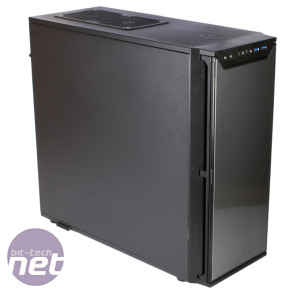
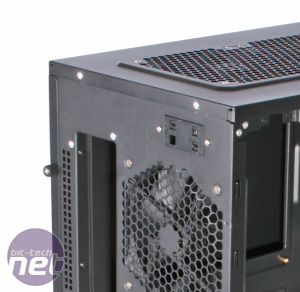







Want to comment? Please log in.